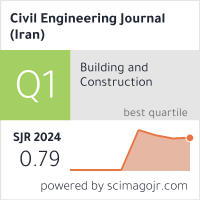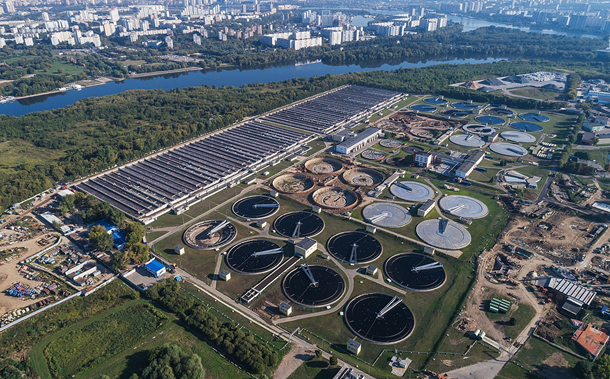IRI Performance Models for Flexible, Semi-Rigid and Composite Pavements in Double-Carriageway Roads
Downloads
Doi:10.28991/CEJ-2025-011-05-01
Full Text:PDF
Downloads
[2] Mulungye, R. M., Owende, P. M. O., & Mellon, K. (2007). Finite element modelling of flexible pavements on soft soil subgrades. Materials and Design, 28(3), 739–756. doi:10.1016/j.matdes.2005.12.006.
[3] Huang, Y., Bird, R. N., & Heidrich, O. (2007). A review of the use of recycled solid waste materials in asphalt pavements. Resources, Conservation and Recycling, 52(1), 58–73. doi:10.1016/j.resconrec.2007.02.002.
[4] Riaz, A., Yasir, N., Badin, G., & Mahmood, Y. (2024). Innovative Pavement Solutions: A Comprehensive Review from Conventional Asphalt to Sustainable Colored Alternatives. Infrastructures, 9(10), 186. doi:10.3390/infrastructures9100186.
[5] Ullidtz, P. (1987). Pavement Analysis. Developments in Civil Engineering. Elsevier, Amsterdam, Netherlands.
[6] Fedrigo, W., Visser, A. T., Steyn, W. J. M., & Núñez, W. P. (2021). Flexural behaviour of lightly cement stabilised materials: South Africa and Brazil. Road Materials and Pavement Design, 22(2), 397–422. doi:10.1080/14680629.2019.1634637.
[7] Xu, J., Li, N., & Xu, T. (2022). Temperature Changes of Interlaminar Bonding Layer in Different Seasons and Effects on Mechanical Properties of Asphalt Pavement. International Journal of Pavement Research and Technology, 15(3), 589–605. doi:10.1007/s42947-021-00039-9.
[8] Huhtala, M., Pihlajamaki, J., & Pienimaki, M. (1989). Effects of tires and tire pressures on road pavements. Transportation Research Record, 1227(1227), 107–114.
[9] Tingle, J. S., Newman, J. K., Larson, S. L., Weiss, C. A., & Rushing, J. F. (2007). Stabilization mechanisms of nontraditional additives. Transportation Research Record, 2(1989), 59–67. doi:10.3141/1989-49.
[10] Shon, C. S., Saylak, D., & Mishra, S. K. (2010). Combined use of calcium chloride and fly ash in road base stabilization. Transportation Research Record, 2186, 120–129. doi:10.3141/2186-13.
[11] Linares-Unamunzaga, A., Gonzalo-Orden, H., Minguela, J. D., & Pérez-Acebo, H. (2018). New procedure for compacting prismatic specimens of cement-treated base materials. Applied Sciences (Switzerland), 8(6), 970. doi:10.3390/app8060970.
[12] Osorio-Lird, A., Chamorro, A., & González, í. (2021). Analysis of roughness performance of chloride-stabilised rural roads. International Journal of Pavement Engineering, 22(13), 1720–1730. doi:10.1080/10298436.2020.1721496.
[13] Diniz, B. C., Fedrigo, W., Kleinert, T. R., Batista, G. dos S., Núñez, W. P., Correa, B. M., & Brito, L. A. T. (2024). Lime Stabilization of Tropical Soil for Resilient Pavements: Mechanical, Microscopic, and Mineralogical Characteristics. Materials, 17(19), 4720. doi:10.3390/ma17194720.
[14] Linares-Unamunzaga, A., Pérez-Acebo, H., Rojo, M., & Gonzalo-Orden, H. (2019). Flexural strength prediction models for soil-cement from Unconfined Compressive Strength at Seven Days. Materials, 12(3), 387. doi:10.3390/ma12030387.
[15] Li, Q., Wang, Z., Li, Y., & Shang, J. (2018). Cold recycling of lime-fly ash stabilized macadam mixtures as pavement bases and subbases. Construction and Building Materials, 169, 306–314. doi:10.1016/j.conbuildmat.2018.03.030.
[16] Dong, Q., Zhao, X., Chen, X., Ma, X., & Cui, X. (2021). Long-term mechanical properties of in situ semi-rigid base materials. Road Materials and Pavement Design, 22(7), 1692–1707. doi:10.1080/14680629.2019.1710239.
[17] Lv, S., Xia, C., Liu, H., You, L., Qu, F., Zhong, W., Yang, Y., & Washko, S. (2021). Strength and fatigue performance for cement-treated aggregate base materials. International Journal of Pavement Engineering, 22(6), 690–699. doi:10.1080/10298436.2019.1634808.
[18] Yu, L., Wu, Y., Meng, Y., Huang, G., Li, R., & Pei, J. (2023). Study on fatigue crack propagation failure in semi-rigid base. Construction and Building Materials, 409, 134007. doi:10.1016/j.conbuildmat.2023.134007.
[19] Khattak, M. J., Nur, M. A., Bhuyan, M. R. U. K., & Gaspard, K. (2014). International roughness index models for HMA overlay treatment of flexible and composite pavements. International Journal of Pavement Engineering, 15(4), 334–344. doi:10.1080/10298436.2013.842237.
[20] Chen, C., Williams, R. C., Marasinghe, M. G., Ashlock, J. C., Smadi, O., Schram, S., & Buss, A. (2015). Assessment of composite pavement performance by survival analysis. Journal of Transportation Engineering, 141(9), 04015018. doi:10.1061/(ASCE)TE.1943-5436.0000784.
[21] Pérez-Acebo, H., Montes-Redondo, M., Appelt, A., & Findley, D. J. (2023). A simplified skid resistance predicting model for a freeway network to be used in a pavement management system. International Journal of Pavement Engineering, 24(2), 2020266. doi:10.1080/10298436.2021.2020266.
[22] Salas, M. í., Pérez-Acebo, H., Calderón, V., & Gonzalo-Orden, H. (2018). Bitumen modified with recycled polyurethane foam for employment in hot mix asphalt. Ingenieria e Investigacion, 38(1), 60–66. doi:10.15446/ing.investig.v38n1.65631.
[23] Zeiada, W., Hamad, K., Omar, M., Underwood, B. S., Khalil, M. A., & Karzad, A. S. (2019). Investigation and modelling of asphalt pavement performance in cold regions. International Journal of Pavement Engineering, 20(8), 986–997. doi:10.1080/10298436.2017.1373391.
[24] Zeiada, W., Dabous, S. A., Hamad, K., Al-Ruzouq, R., & Khalil, M. A. (2020). Machine Learning for Pavement Performance Modelling in Warm Climate Regions. Arabian Journal for Science and Engineering, 45(5), 4091–4109. doi:10.1007/s13369-020-04398-6.
[25] Naseri, H., Jahanbakhsh, H., Foomajd, A., Galustanian, N., Karimi, M. M., & D. Waygood, E. O. (2023). A newly developed hybrid method on pavement maintenance and rehabilitation optimization applying Whale Optimization Algorithm and random forest regression. International Journal of Pavement Engineering, 24(2), 2147672. doi:10.1080/10298436.2022.2147672.
[26] Shokoohi, M., Golroo, A., & Ardeshir, A. (2023). Pavement maintenance planning using a risk-based approach and fault tree analysis. International Journal of Pavement Engineering, 24(2), 2276160. doi:10.1080/10298436.2023.2276160.
[27] Sandamal, K., Shashiprabha, S., Muttil, N., & Rathnayake, U. (2023). Pavement Roughness Prediction Using Explainable and Supervised Machine Learning Technique for Long-Term Performance. Sustainability (Switzerland), 15(12), 9617. doi:10.3390/su15129617.
[28] Kulkarni, R. B., & Miller, R. W. (2003). Pavement Management Systems: Past, Present, and Future. Transportation Research Record, 1853(1853), 65–71. doi:10.3141/1853-08.
[29] Santos, J., & Ferreira, A. (2012). Pavement design optimization considering costs and preventive interventions. Journal of Transportation Engineering, 138(7), 911–923. doi:10.1061/(ASCE)TE.1943-5436.0000390.
[30] Gomes Correia, M., Bonates, T. de O. e., Prata, B. de A., & Nobre Júnior, E. F. (2022). An integer linear programming approach for pavement maintenance and rehabilitation optimization. International Journal of Pavement Engineering, 23(8), 2710–2727. doi:10.1080/10298436.2020.1869736.
[31] Yao, L., Leng, Z., Jiang, J., & Ni, F. (2022). Modelling of pavement performance evolution considering uncertainty and interpretability: a machine learning based framework. International Journal of Pavement Engineering, 23(14), 5211–5226. doi:10.1080/10298436.2021.2001814.
[32] AASHTO. (1993). AASHTO Guide for design of pavement structures. American Association of State Highway and Transportation Officials, Washington, United States.
[33] Pérez-Acebo, H., Mindra, N., Railean, A., & Rojí, E. (2019). Rigid pavement performance models by means of Markov Chains with half-year step time. International Journal of Pavement Engineering, 20(7), 830–843. doi:10.1080/10298436.2017.1353390.
[34] Wu, Z., Flintsch, G., Ferreira, A., & de Picado-Santos, L. (2012). Framework for multiobjective optimization of physical highway assets investments. Journal of Transportation Engineering, 138(12), 1411–1421. doi:10.1061/(ASCE)TE.1943-5436.0000458.
[35] Khan, M. U., Mesbah, M., Ferreira, L., & Williams, D. J. (2016). Development of optimum pavement maintenance strategies for a road network. Australian Journal of Civil Engineering, 14(2), 85–96. doi:10.1080/14488353.2017.1362823.
[36] Odoki, J. B., & Kerali, H. G. (2000). Analytical framework and model descriptions. HDM 4: Highway Development & Management Series, 4, 1–627.
[37] Liu, Q., Xie, J., & Zhang, Z. (2021). A Vehicle Fuel Consumption Model on Reconstructed Roads Based on the Roughness and Its Measurement Method. Advances in Civil Engineering, 8812376. doi:10.1155/2021/8812376.
[38] Fani, A., Golroo, A., Ali Mirhassani, S., & Gandomi, A. H. (2022). Pavement maintenance and rehabilitation planning optimisation under budget and pavement deterioration uncertainty. International Journal of Pavement Engineering, 23(2), 414–424. doi:10.1080/10298436.2020.1748628.
[39] Zhang, Z., Zhang, H., Xu, S., & Lv, W. (2022). Pavement roughness evaluation method based on the theoretical relationship between acceleration measured by smartphone and IRI. International Journal of Pavement Engineering, 23(9), 3082–3098. doi:10.1080/10298436.2021.1881783.
[40] Levesque, W., Samson, N., Bégin-Drolet, A., & Lépine, J. (2023). Pavement-effects on heavy-vehicle fuel consumption in cold climate using a statistical approach. Transportation Research Part D: Transport and Environment, 120. doi:10.1016/j.trd.2023.103792.
[41] Tamagusko, T., & Ferreira, A. (2023). Machine Learning for Prediction of the International Roughness Index on Flexible Pavements: A Review, Challenges, and Future Directions. Infrastructures, 8(12), 170. doi:10.3390/infrastructures8120170.
[42] Sayers, M., Gillespie, T. D., & Queiroz, C. A. V. (1984). International Experiment to Establish Correlation and Standard Calibration Methods for Road Roughness Measurements. The World Bank, Washington, United States.
[43] Sayers, M. W. (1995). On the calculation of international roughness index from longitudinal road profile. Transportation Research Record, Washington, United States.
[44] Sayers, M. W., Gillespie, T. D., & Paterson, W. D. O. (1986). Guidelines for Conducting and Calibrating Road Roughness Measurements. World Bank Technical Paper Number 46, The World Bank, Washington, United States.
[45] MúÄka, P. (2017). International Roughness Index specifications around the world. Road Materials and Pavement Design, 18(4), 929–965. doi:10.1080/14680629.2016.1197144.
[46] Lin, J. D., Yau, J. T., & Hsiao, L. H. (2003). Correlation analysis between international roughness index (IRI) and pavement distress by neural network. 82nd Annual Meeting of the Transportation Research Board, 12-16, January, 2003, Washington, United States.
[47] Yamany, M. S., Saeed, T. U., Volovski, M., & Ahmed, A. (2020). Characterizing the Performance of Interstate Flexible Pavements Using Artificial Neural Networks and Random Parameters Regression. Journal of Infrastructure Systems, 26(2), 04020010. doi:10.1061/(asce)is.1943-555x.0000542.
[48] Sidess, A., Ravina, A., & Oged, E. (2022). A model for predicting the deterioration of the international roughness index. International Journal of Pavement Engineering, 23(5), 1393–1403. doi:10.1080/10298436.2020.1804062.
[49] Alonso-Solorzano, í., Pérez-Acebo, H., Findley, D. J., & Gonzalo-Orden, H. (2023). Transition probability matrices for pavement deterioration modelling with variable duty cycle times. International Journal of Pavement Engineering, 24(2), 2278694. doi:10.1080/10298436.2023.2278694.
[50] Pérez-Acebo, H., Bejan, S., & Gonzalo-Orden, H. (2018). Transition Probability Matrices for Flexible Pavement Deterioration Models with Half-Year Cycle Time. International Journal of Civil Engineering, 16(9), 1045–1056. doi:10.1007/s40999-017-0254-z.
[51] Gharieb, M., Nishikawa, T., Nakamura, S., & Thepvongsa, K. (2022). Modeling of Pavement Roughness Utilizing Artificial Neural Network Approach for Laos National Road Network. Journal of Civil Engineering and Management, 28(4), 261–277. doi:10.3846/jcem.2022.15851.
[52] Isradi, M., Rifai, A. I., Prasetijo, J., Kinasih, R. K., & Setiawan, M. I. (2024). Development of Pavement Deterioration Models Using Markov Chain Process. Civil Engineering Journal (Iran), 10(9), 2954–2965. doi:10.28991/CEJ-2024-010-09-012.
[53] Boonsiripant, S., Athan, C., Jedwanna, K., Lertworawanich, P., & Sawangsuriya, A. (2024). Comparative Analysis of Deep Neural Networks and Graph Convolutional Networks for Road Surface Condition Prediction. Sustainability (Switzerland), 16(22), 9805. doi:10.3390/su16229805.
[54] AASHTO. (2012). Pavement Management Guide (2nd Ed.). American Association of State Highway and Transportation Officials (AASHTO), Washington, United States.
[55] Hudson, W. R., Haas, R., & Pedigo, R. D. (1979). Pavement Management System Development. National Cooperative Highway Research Program Report 2015, Highway Research Record 407, Transportation Research Board, National Research Council, Washington, United States.
[56] Saplioglu, M., Unal, A., & Bocek, M. (2022). Detection of critical road roughness sections by trend analysis and investigation of driver speed interaction. Frontiers of Structural and Civil Engineering, 16(4), 515–532. doi:10.1007/s11709-022-0814-4.
[57] Haas, R., Hudson, W. R., & Zaniewski, J. P. (1994). Modern pavement management. Krieger Publishing Company, Melbourne, United States.
[58] Uddin, W. (2005). Pavement Management Systems. The Handbook of Highway Engineering, CRC Press, Boca Raton, United States. doi:10.1201/9781420039504.ch18.
[59] Justo-Silva, R., Ferreira, A., & Flintsch, G. (2021). Review on machine learning techniques for developing pavement performance prediction models. Sustainability (Switzerland), 13(9), 5248. doi:10.3390/su13095248.
[60] Abaza, K. A. (2018). Empirical-Markovian model for predicting the overlay design thickness for asphalt concrete pavement. Road Materials and Pavement Design, 19(7), 1617–1635. doi:10.1080/14680629.2017.1338188.
[61] Sharma, A., Sachdeva, S. N., & Aggarwal, P. (2023). Predicting IRI Using Machine Learning Techniques. International Journal of Pavement Research and Technology, 16(1), 128–137. doi:10.1007/s42947-021-00119-w.
[62] Wu, Y., Pang, Y., & Zhu, X. (2024). Evolution of prediction models for road surface irregularity: Trends, methods and future. Construction and Building Materials, 449, 138316. doi:10.1016/j.conbuildmat.2024.138316.
[63] Park, S. H., & Kim, J. H. (2019). Comparative Analysis of Performance Prediction Models for Flexible Pavements. Journal of Transportation Engineering, Part B: Pavements, 145(1), 04018062. doi:10.1061/jpeodx.0000090.
[64] Dong, Q., Huang, B., & Richards, S. H. (2015). Calibration and application of treatment performance models in a pavement management system in Tennessee. Journal of Transportation Engineering, 141(2), 04014076. doi:10.1061/(ASCE)TE.1943-5436.0000738.
[65] Amador-Jiménez, L. E., & Mrawira, D. (2011). Reliability-based initial pavement performance deterioration modelling. International Journal of Pavement Engineering, 12(2), 177–186. doi:10.1080/10298436.2010.535538.
[66] Elhadidy, A. A., Elbeltagi, E. E., & El-Badawy, S. M. (2020). Network-Based Optimization System for Pavement Maintenance Using a Probabilistic Simulation-Based Genetic Algorithm Approach. Journal of Transportation Engineering, Part B: Pavements, 146(4), 04020069. doi:10.1061/jpeodx.0000237.
[67] García-Segura, T., Montalbán-Domingo, L., Llopis-Castelló, D., Lepech, M. D., Sanz, M. A., & Pellicer, E. (2022). Incorporating pavement deterioration uncertainty into pavement management optimization. International Journal of Pavement Engineering, 23(6), 2062–2073. doi:10.1080/10298436.2020.1837827.
[68] Li, N., Haas, R., & Xie, W. C. (1997). Development of a new asphalt pavement performance prediction model. Canadian Journal of Civil Engineering, 24(4), 547–559. doi:10.1139/l97-001.
[69] Abaza, K. A. (2016). Back-calculation of transition probabilities for Markovian-based pavement performance prediction models. International Journal of Pavement Engineering, 17(3), 253–264. doi:10.1080/10298436.2014.993185.
[70] Yamany, M. S., Abraham, D. M., & Labi, S. (2021). Comparative Analysis of Markovian Methodologies for Modeling Infrastructure System Performance. Journal of Infrastructure Systems, 27(2), 04021003. doi:10.1061/(asce)is.1943-555x.0000604.
[71] Alimoradi, S., Golroo, A., & Asgharzadeh, S. M. (2022). Development of pavement roughness master curves using Markov Chain. International Journal of Pavement Engineering, 23(2), 453–463. doi:10.1080/10298436.2020.1752917.
[72] Alaswadko, N., & Hwayyis, K. (2022). An approach to investigate the supplementary inconsistency between time series data for predicting road pavement performance models. International Journal of Pavement Engineering, 24(2), 2045017. doi:10.1080/10298436.2022.2045017.
[73] Gong, H., Sun, Y., Hu, W., Polaczyk, P. A., & Huang, B. (2019). Investigating impacts of asphalt mixture properties on pavement performance using LTPP data through random forests. Construction and Building Materials, 204, 203–212. doi:10.1016/j.conbuildmat.2019.01.198.
[74] Aljarah, I., Faris, H., & Mirjalili, S. (2018). Optimizing connection weights in neural networks using the whale optimization algorithm. Soft Computing, 22(1), 1–15. doi:10.1007/s00500-016-2442-1.
[75] Mishra, R., Gupta, H. P., & Dutta, T. (2021). A Road Health Monitoring System Using Sensors in Optimal Deep Neural Network. IEEE Sensors Journal, 21(14), 15527–15534. doi:10.1109/JSEN.2020.3005998.
[76] Elshaboury, N., Yamany, M. S., Labi, S., & Smadi, O. (2024). Enhancing local road pavement condition prediction using Bayesian-optimized ensemble machine learning and adaptive synthetic sampling technique. International Journal of Pavement Engineering, 25(1), 2365957. doi:10.1080/10298436.2024.2365957.
[77] Sollazzo, G., Fwa, T. F., & Bosurgi, G. (2017). An ANN model to correlate roughness and structural performance in asphalt pavements. Construction and Building Materials, 134, 684–693. doi:10.1016/j.conbuildmat.2016.12.186.
[78] García de Soto, B., Bumbacher, A., Deublein, M., & Adey, B. T. (2018). Predicting road traffic accidents using artificial neural network models. Infrastructure Asset Management, 5(4), 132–144. doi:10.1680/jinam.17.00028.
[79] AASHTO. (1962). The AASHTO Road Test: Pavement research. Washington, DC: National Academy of Sciences - National Research Council, American Association of State Highway and Transportation Officials (AASHTO), Washington, United States.
[80] Watanatada, T., Harral, C. G., Paterson, W. D. O., Dhareshwar, A. M., Bhandari, A., & Tsunokawa, K. (1990). The highway design and maintenance standards model. Volume 1. Description of the HDM-III model. Transportation Research Part A: General. John Hopkins University Press, Maryland, United States.
[81] Morosiuk, G., Riley, M. J., & Odoki, J. B. (2004). Modelling road deterioration and works effects-version 2-Highway Development and Management-HDM-4. Highway development and management series, The World Bank, Washington, United States.
[82] Paterson, W. D. O. (1990). Road deterioration and maintenance effects: Models for planning and management. In Transportation Research Part A: General. John Hopkins University Press, Maryland, United States. doi:10.1016/0191-2607(90)90027-4.
[83] Pérez-Acebo, H., Linares-Unamunzaga, A., Abejón, R., & Rojí, E. (2018). Research trends in pavement management during the first years of the 21st century: A bibliometric analysis during the 2000-2013 Period. Applied Sciences (Switzerland), 8(7), 1041. doi:10.3390/app8071041.
[84] AASHTO. (2008). Mechanistic-Empirical Pavement Design Guide. A manual of practice. American Association of State Highway and Transportation Officials (AASHTO), Washington, United States.
[85] AASHTO. (2015). Mechanistic-Empirical Pavement Design Guide. A manual of practice (2nd Ed.). American Association of State Highway and Transportation Officials (AASHTO), Washington, United States.
[86] AASHTO. (2004). Guide for Mechanistic-Empirical design of new and rehabilitated pavement structures; NCHRP 1-37A. American Association of State Highway and Transportation Officials (AASHTO), Washington, United States.
[87] Abdelaziz, N., Abd El-Hakim, R. T., El-Badawy, S. M., & Afify, H. A. (2020). International Roughness Index prediction model for flexible pavements. International Journal of Pavement Engineering, 21(1), 88–99. doi:10.1080/10298436.2018.1441414.
[88] Pérez-Acebo, H., Linares-Unamunzaga, A., Rojí, E., & Gonzalo-Orden, H. (2020). IRI performance models for flexible pavements in two-lane roads until first maintenance and/or rehabilitation work. Coatings, 10(2), 97. doi:10.3390/coatings10020097.
[89] Moreira, A. V., Tinoco, J., Oliveira, J. R. M., & Santos, A. (2018). An application of Markov chains to predict the evolution of performance indicators based on pavement historical data. International Journal of Pavement Engineering, 19(10), 937–948. doi:10.1080/10298436.2016.1224412.
[90] Alaswadko, N., Hassan, R., Meyer, D., & Mohammed, B. (2019). Modelling roughness progression of sealed granular pavements: a new approach. International Journal of Pavement Engineering, 20(2), 222–232. doi:10.1080/10298436.2017.1283689.
[91] Naseri, H., Ehsani, M., Golroo, A., & Moghadas Nejad, F. (2022). Sustainable pavement maintenance and rehabilitation planning using differential evolutionary programming and coyote optimisation algorithm. International Journal of Pavement Engineering, 23(8), 2870–2887. doi:10.1080/10298436.2021.1873331.
[92] Marcelino, P., de Lurdes Antunes, M., Fortunato, E., & Gomes, M. C. (2021). Machine learning approach for pavement performance prediction. International Journal of Pavement Engineering, 22(3), 341–354. doi:10.1080/10298436.2019.1609673.
[93] Kaloop, M. R., El-Badawy, S. M., Ahn, J., Sim, H. B., Hu, J. W., & Abd El-Hakim, R. T. (2022). A hybrid wavelet-optimally-pruned extreme learning machine model for the estimation of international roughness index of rigid pavements. International Journal of Pavement Engineering, 23(3), 862–876. doi:10.1080/10298436.2020.1776281.
[94] Choi, S., & Do, M. (2020). Development of the road pavement deterioration model based on the deep learning method. Electronics (Switzerland), 9(1), 3. doi:10.3390/electronics9010003.
[95] Nguyen, H. L., Pham, B. T., Son, L. H., Thang, N. T., Ly, H. B., Le, T. T., Ho, L. S., Le, T. H., & Bui, D. T. (2019). Adaptive network based fuzzy inference system with meta-heuristic optimizations for international roughness index prediction. Applied Sciences (Switzerland), 9(21), 4715. doi:10.3390/app9214715.
[96] Yang, L., Hu, Y., & Zhang, H. (2020). Comparative study on asphalt pavement rut based on analytical models and test data. International Journal of Pavement Engineering, 21(6), 781–795. doi:10.1080/10298436.2018.1511781.
[97] Guo, R., Nian, T., Li, P., Fu, J., & Guo, H. (2019). Anti-erosion performance of asphalt pavement with a sub-base of cement-treated mixtures. Construction and Building Materials, 223, 278–287. doi:10.1016/j.conbuildmat.2019.06.202.
[98] Wang, X., & Zhong, Y. (2019). Reflective crack in semi-rigid base asphalt pavement under temperature-traffic coupled dynamics using XFEM. Construction and Building Materials, 214, 280–289. doi:10.1016/j.conbuildmat.2019.04.125.
[99] Yan, X., Chen, L., You, Q., & Fu, Q. (2019). Experimental analysis of thermal conductivity of semi-rigid base asphalt pavement. Road Materials and Pavement Design, 20(5), 1215–1227. doi:10.1080/14680629.2018.1431147.
[100] AASHTO. (2020). Mechanistic-Empirical Pavement Design Guide. A manual of practice (3rd Ed.). American Association of State Highway and Transportation Officials (AASHTO), Washington, United States.
[101] Pérez-Acebo, H., Gonzalo-Orden, H., Findley, D. J., & Rojí, E. (2021). Modeling the international roughness index performance on semi-rigid pavements in single carriageway roads. Construction and Building Materials, 272, 121665. doi:10.1016/j.conbuildmat.2020.121665.
[102] Hanson, J. R. (2006). Cracking and Roughness of Asphalt Pavements Constructed Using Cement-Treated Base Materials. Master Thesis, Brigham Young University, Provo, United States.
[103] Assogba, O. C., Tan, Y., Zhou, X., Zhang, C., & Anato, J. N. (2020). Numerical investigation of the mechanical response of semi-rigid base asphalt pavement under traffic load and nonlinear temperature gradient effect. Construction and Building Materials, 235, 117406. doi:10.1016/j.conbuildmat.2019.117406.
[104] Barros, R., Yasarer, H., Uddin, W., & Sultana, S. (2021). Roughness Modeling for Composite Pavements using Machine Learning. IOP Conference Series: Materials Science and Engineering, 1203(3), 032035. doi:10.1088/1757-899x/1203/3/032035.
[105] Barros, R., Yasarer, H., & Sultana, S. (2022). International Roughness Index Model for Composite Pavements in the LTPP Wet Non-Freeze Climate Region: Machine Learning and Regression Approaches. 101st Annual Meeting of the Transportation Research Board (TRB), 9-13 January, 2022, Washington, United States.
[106] Neema, I. (2020). Cluster-Based Composite Pavement Deterioration Modeling: A Framework for Incorporating Flooding. Master Thesis, The University of North Carolina at Charlotte, Charlotte, United States.
[107] Kaya, O., Ceylan, H., Kim, S., Waid, D., & Moore, B. P. (2020). Statistics and Artificial Intelligence-Based Pavement Performance and Remaining Service Life Prediction Models for Flexible and Composite Pavement Systems. Transportation Research Record, 2674(10), 448–460. doi:10.1177/0361198120915889.
[108] Al-Suleiman, T. I., & Shiyab, A. M. S. (2003). Prediction of Pavement Remaining Service Life Using Roughness Data - Case Study in Dubai. International Journal of Pavement Engineering, 4(2), 121–129. doi:10.1080/10298430310001634834.
[109] Georgiou, P., Plati, C., & Loizos, A. (2018). Soft Computing Models to Predict Pavement Roughness: A Comparative Study. Advances in Civil Engineering, 2018. doi:10.1155/2018/5939806.
[110] DFG/GFA (2024). Road capacity information for Gipuzkoa. Compilation up to 2023. Dep. de Infraestructuras Viarias y Estrategia Territorial, Donostia-San Sebastián, Spain. (In Spanish).
[111] MFOM (Ministerio de Fomento). (2003). FOM/3460/2003, of November 28, approving standard 6.1-IC "Road Sections" of the Highway Instructions. Ministerio de Fomento, Madrid, Spain. (In Spanish).
[112] Hwang, Y., & Song, J. (2023). Recent deep learning methods for tabular data. Communications for Statistical Applications and Methods, 30(2), 215–226. doi:10.29220/CSAM.2023.30.2.215.
[113] Borisov, V., Leemann, T., Sebler, K., Haug, J., Pawelczyk, M., & Kasneci, G. (2024). Deep Neural Networks and Tabular Data: A Survey. IEEE Transactions on Neural Networks and Learning Systems, 35(6), 7499–7519. doi:10.1109/TNNLS.2022.3229161.
[114] Montgomery, D. C., Peck, E. A., & Vining, G. G. (2021). Introduction to linear regression analysis. John Wiley & Sons, Hoboken, United States.
[115] Pérez-Acebo, H., Gonzalo-Orden, H., & Rojí, E. (2019). Skid resistance prediction for new two-lane roads. Proceedings of the Institution of Civil Engineers: Transport, 172(5), 264–273. doi:10.1680/jtran.17.00045.
[116] Zhou, Q., Okte, E., & Al-Qadi, I. L. (2021). Predicting pavement roughness using deep learning algorithms. Transportation Research Record, 2675(11), 1062–1072. doi:10.1177/03611981211023765.
[117] George, K. P. (2000). MDOT pavement management system: prediction models and feedback system (No. FHWA/MS-DOT-RD-00-119). Department of Transportation, Mississippi, United States.
[118] Albuquerque, F., & Núñez, W. (2011). Development of roughness prediction models for low-volume road networks in Northeast Brazil. Transportation Research Record, 2205, 198–205. doi:10.3141/2205-25.
[119] Zu, F., Du, C., Han, C., Xu, L., & Peng, Q. (2023). Applicable Conditions of Room-and-Pillar Mining Goaf Treatment Methods under a Traffic Load. Applied Sciences (Switzerland), 13(3), 2024. doi:10.3390/app13032024.
[120] Aragón, G., Pérez-Acebo, H., Salas, M. í., & Aragón-Torre, í. (2024). Analysis of the static and dynamic elastic moduli of a one-coat rendering mortar with laboratory and in situ samples. Case Studies in Construction Materials, 20. doi:10.1016/j.cscm.2024.e02868.
[121] Han, S. H., & Kim, J. K. (2004). Effect of temperature and age on the relationship between dynamic and static elastic modulus of concrete. Cement and Concrete Research, 34(7), 1219–1227. doi:10.1016/j.cemconres.2003.12.011.
Copyright (c) 2025 Authors

This work is licensed under a Creative Commons Attribution 4.0 International License.
- Authors retain all copyrights. It is noticeable that authors will not be forced to sign any copyright transfer agreements.
- This work (including HTML and PDF Files) is licensed under a Creative Commons Attribution 4.0 International License.![]()















